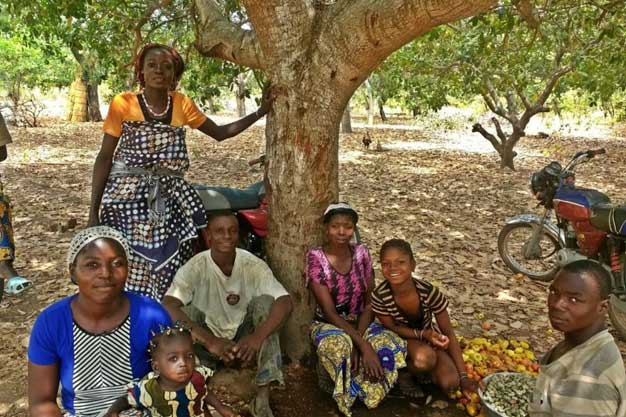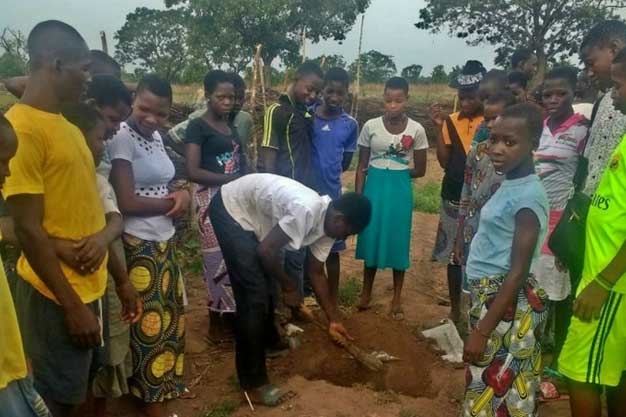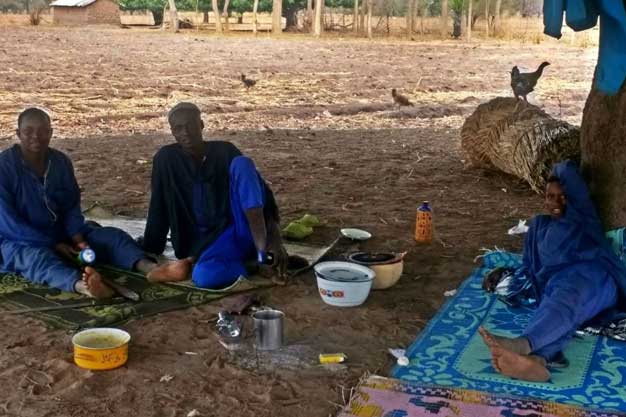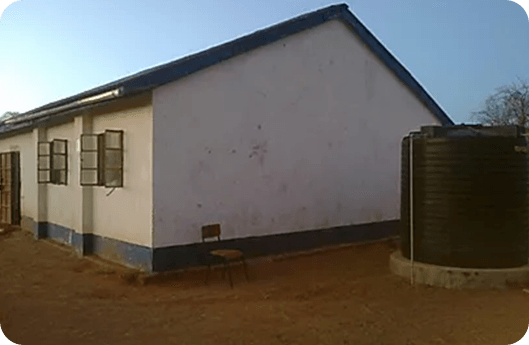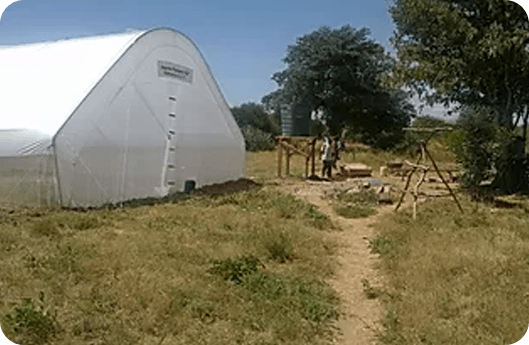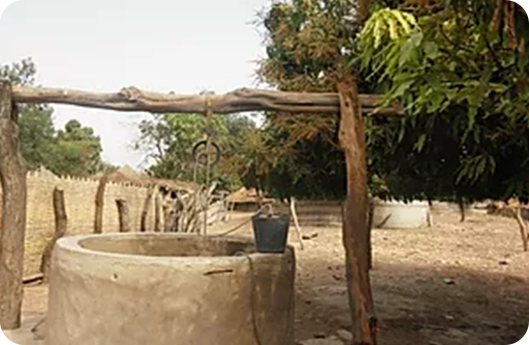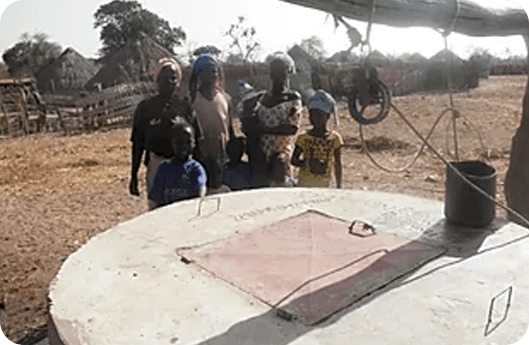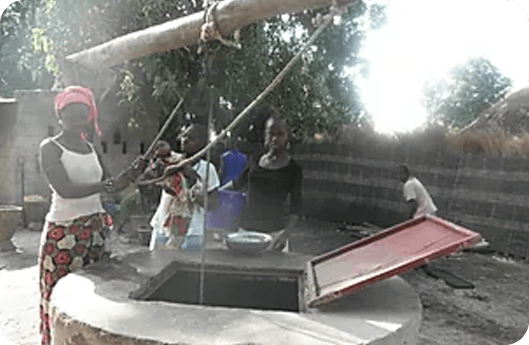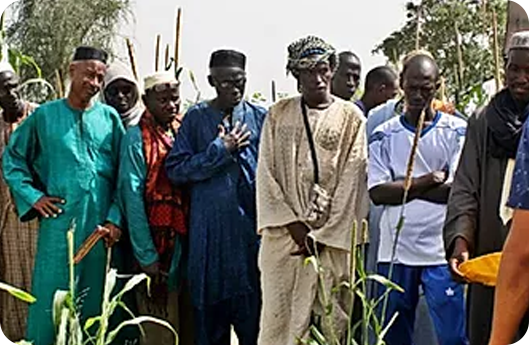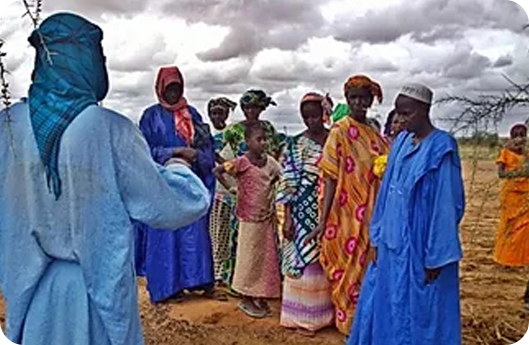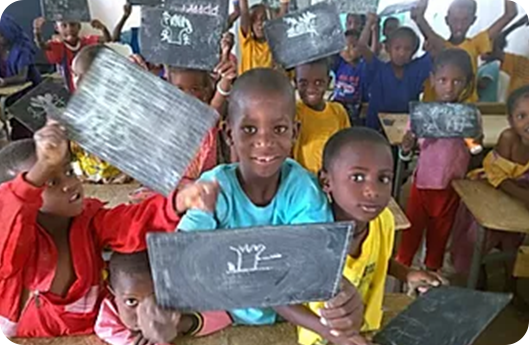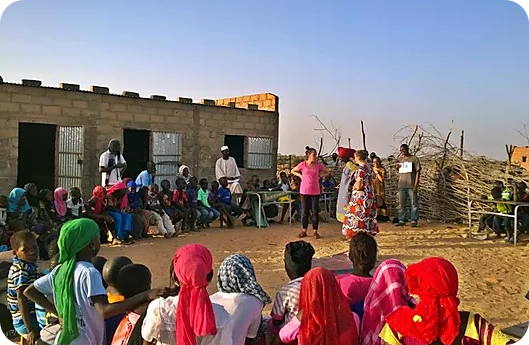Current Projects
DonateHumanitarian Aid : Current Projects
We are very excited to have the opportunity to work with
Water Charity, a 501 (c) 3 nonprofit dedicated to helping people access clean drinking water and improved sanitation!
Water Charity has completed more than 2,500 water, sanitation, and public health projects in 66 countries, benefiting over 2 million people. The G3Foundation has joined efforts with Water Charity and has selected several projects that are ready to begin work, but that still require funding. We are reaching out to local companies and the general public to ask for monetary donations to support our efforts in fundraising for these desperately needed and life-saving endeavors. Please check out the selected projects below and make the choice to become a safe-water sponsor! We will be providing updates as the projects are completed; check back often to see their progress!
Help us Fix the Salton Sea
Project Description:
The Salton Sea in Imperial and Riverside Counties, California is in critical condition. Doing nothing is not a solution. The problems that currently exist, and what’s to come in the future, present a looming public health and environmental crises with binational implications.
As the Salton Sea deteriorates, people in the community are exposed to increasing levels of toxic dust. The Salton Sea is forecasted to shrink by an area of roughly 100 square miles by the middle of the century. This will expose vast tracts of highly emissive playa which often create dust storms that, when inhaled, can cause respiratory diseases and asthma. Up to 100 tons of dust could be added to the air each day, which would have the potential to result in more than $29 billion in costs from lower property values and health care costs associated with respiratory illnesses.
At the same time, the disappearance of this water could accelerate the loss habitat for both migrating waterfowl that use the Salton Sea as a primary resting place during their migration along the Pacific Flyway, and other birds who call the Sea their year-round home. Water quality deterioration is approaching 60,000 PPM total dissolved solids (salt), and current inflows into the Salton Sea from the New and Alamo Rivers and agricultural runoff is extremely poor quality and includes raw sewage.
Doing nothing to restore the Salton Sea would have a devastating economic impact on the surrounding communities. A 2014 study by the Pacific Institute estimated the cost of inaction on Salton Sea restoration. The value of the public health costs of continuing non-attainment of federal air quality standards in the Imperial Valley through 2047 were estimated at $21 billion (and can be as high as $37 billion under a worst case scenario). Blowing dust and declining sea elevations were estimated to reduce property values by $400 million in the Imperial Valley and by $6.4 billion in the Coachella Valley. Continued deterioration of the Salton Sea was estimated to reduce direct recreational spending at the Salton Sea State Recreation Area by $6 million annually. Assuming Californians value the ecological benefits of the Salton Sea the same as Mono Lake, “a potential non-use valuation of the Salton Sea (is) on the order of $1.9 billion annually.”
Restoration is especially urgent now because Imperial Irrigation District’s delivery of mitigation water under the 2003 Quantification Settlement Agreement (a compilation of agreements governing water management in the Lower Colorado River Basin) will end at the end of 2017.
The Binational Water Group (BWG) has developed a solution to the Salton Sea deterioration which takes into account the geologic connection, known as the Salton Trough, which runs between the Salton Sea in the north to the Sea of Cortez in the south. The opportunity for binational cooperation building on BWG relationships makes this a powerful and achievable solution.
We are asking for your help to fund the development of a white paper that will discuss why problems exist today, what the solutions are and what are the overall economic considerations. Your tax-deductible contribution will help us take the vital next step of producing an overall plan that provides a road map for moving forward and guides project development, subsequent fundraising and negotiation of necessary agreements with interests in the United States and Mexico.
The white paper will be prepared under the direction of Stratecon Inc., G3SoilWorks Inc., and G3Foundation org., in consultation with public, private and non-governmental parties who have expressed interest in Salton Sea restoration.
Thank you so much for any support in this matter. Please consider sharing this so as many people as possible have the opportunity to further a solution for the Salton Sea.
Sinende Commune Well Project - Benin
This project is made possible through the partnership of WATER CHARITY and the NATIONAL PEACE CORPS ASSOCIATION.
Location
Community Description
This project summary has been redacted for security reasons to omit the specific project location. Gxxxxxx-Bxxx, Sinende Commune, Borgou, Department, Benin.
Community Description
The project will take place in Gxxxxxx-Bxxx, a small rural village 15 kilometers from the commune head of Sinende. The commune is rural, making it hard to transport perishable goods over long distances. There is one paved road that goes through the village. All perishable goods like vegetables must be produced in the village itself.
The primary crops are maize, cotton, yams, and sorghum, followed by manioc, soy, rice, beans, and cashews. These crops are cash crops but do not offer the necessary nutrients to battle the malnutrition rampant in the region. Most families in the region earn their living from cash crop farming and are financially insecure as a result.
All of the vegetables like carrots, onions, lettuce, cabbage, okra, peppers, and others come from Libellule, the one garden in the village. It is one of five gardens in the Sinende region. It is the only producer of vegetables for more than 7,595 village residents. The garden spans 2 acres and has over 45 members, with hopes of expanding. The garden is located on the edge of the village and gives well access to more than 20 surrounding households.
Problem Addressed
The climate consists of two basic seasons: rainy and dry. The rainy season is mid-April to mid-October. It is almost impossible to find clean drinking water during this season because the rain washes all of the road run-off and fecal matter from livestock and humans alike into the normally clean dirt wells used by more than 30% of the village. The other 70% of the village uses pumps. The garden is situated so that the dirty run-off tapers off before it reaches the garden. Its single well remains useable, so many people in the village take advantage of it as well. During the dry season, however, there is a time from February to mid-April that the locals call "chaleur" or "the heat". It is almost impossible to find any clean water during this season. The 6 pumps in village are locked and it is necessary to pay a fee to use them. The 20% private wells are also locked. The garden well is unlocked and remains open to the public.
It is estimated that more than 50 households use the one well during this season. The well is insufficient for the more than 600 people who use it. The gardening group paid 200,000 CFA (347 USD) to have a hand- dug 3 meter well put in. The job was poorly done. The well was never lined with cement so each rainy season it grows wider taking up valuable gardening space and adding contaminants to the water. If unfixed this well could become nothing more than a large sink hole. The simplest and most cost-effective way to serve as many people as possible is to fix the current well and dig an additional well. In order to fully meet the increasing demand for clean water, a completely new 6-meter well is needed.
Project Description
This project is to construct a simple deep-dug well and repair an existing well. The two wells will be built by a reputable contractor, who has already done numerous projects with NGOs in the area.
The wells will serve the gardening group and the 10% of the village who use the wells for drinking water. Both of the wells will be solid and durable and require little maintenance.
Both wells will be covered and lined with cement. Water will be drawn by a pulley system.
The project will be implemented under the direction of the Gxxxxxx-Bxxx garden group, which is contributing 25% of the needed funds.
Project Impact
600 people will benefit from the project.
Peace Corps Volunteer Directing Project
Amanda Cornish
Monitoring and Maintenance
After the construction of the wells, trainings will be carried out on how to properly use the well and how to store clean water. The gardening group's treasurer will use group funds to maintain the wells and perform needed repairs.
Fundraising Target
$2,500; Funds raised in excess of the project amount will be allocated to other projects in the country.
Donations Collected to Date
$2,500 This project has been fully funded through the generosity of the
G3 Foundation, of Costa Mesa, CA, USA.
Dollar Amount Needed
$0.00 - Additional donations will be used for future projects in Benin.
Country: Benin
Partner: National Peace Corps Association
Funds Needed: Fully Funded
Progress: Underway
Sare Aladji Well Project- Senegal
Project Link: View the project
before
work begins.
Project Description:
In a community of 700 where approximately 1/6 of the population is under 5 years of age, it is extremely important to assure there is a sanitary and sustainable water source. The village of Sare Aladji in Senegal is comprised mostly of farmers and herders that share one communal faucet in the village. The closest water source is a 6 kilometer walk from the community.
At one point, there were pipes bringing water to the community faucet; however these have been shut off due to problems in the pipeline such as corrosion and breakage.
In addition to the residents of Sare Aladji, the population of 3-4 nearby villages also rely on the only school and health hut in the area. The well will benefit the 700 people of Sare Aladji, their livestock, and the surrounding communities.
This project will bring another well to the community. The village chief will be overseeing the project and in charge of coordinating community contributions such as money, food, and lodging for the laborers. After construction has been completed, the chief will be in charge of making sure the well is maintained and repaired.
This project will be led by a Peace Corps Volunteer who will hold a health seminar with the health workers on the importance of proper well use and storage of clean water.
Kyanguli Secondary School Rainwater Harvesting Project- Phase II- Kenya
Project Description:
The Kyanguli Secondary school population has tripled in recent years and with no running water, the school was not able to keep up with the need of the students and faculty. At one point, there was a pipe bringing in water from 2 km away; however the pipe burst forcing the school to use their water reserves and walk to the dirty riverbed to bring in water from hand-dug wells.
Due to the worn down condition of the tank combined with a recent contamination inside, the water tank needed replacement. This was done in Phase I of the project, which was led by a Peace Corp volunteer.
Phase II was to complete the rainwater catchment system by installing gutters at the school connected to the new storage tank. G3Foundation funded Phase II which was for the purchase and transport all of the metal gutter materials and additional parts, as well as labor, a wastewater catchment, and water treatment chemicals to prevent waterborne diseases.
The 150+ students, school staff, and the community of over 500 people will benefit from this project. Water runoff and crops produced will be sold to the community with the proceeds going to operating costs of the school.
This project was successfully completed by Peace Corp volunteer Peter Hess. Rain gutters were installed at the school and connected to the 5,000 liter storage tank, allowing larger amounts of rainwater catchment. The gutters were installed using sustainable techniques to ensure longevity and minimize repair.
The water is used for various needs of the community such as growing vegetables in the newly built greenhouse, water reserves for the dry season, and decreasing the schools need to purchase water from the state.
Diankancounda Ogeul Well Improvement Project - Senegal
Project Description:
In the Mampatim District of the Kolda Region of Senegal lies the village Diankancounda Ogeul. With a population close to 1000 people, a majority are farmers. The village consists of 6 neighborhoods that share the only school in the area, an elementary school.
The few wells that were serving the area for drinking water were uncovered allowing in contaminants, and were in a state of disrepair. Severe health problems can occur when contaminated water is consumed, including potentially fatal gastrointestinal diseases.
This project was to provide materials for covers on 4 drinking water wells as well as to construct and install them.
Education to the locals on proper well water retrieval such as using a cloth filter when pouring water into individual buckets, storing water properly, and keeping each well covered when not in use was provided.
Peace Corp Volunteer, Julia Bowers was in charge of this project and completed it quickly. The village chief, the mason on the project, and the PCV purchased the materials including cement, metal doors, rebar, and rubber stripping.
Construction was completed by the mason and chief, and education to the community on proper well use and hygiene was provided by Julia .Construction was completed by the mason and chief, and education to the community on proper well use and hygiene was provided by Julia.
Digaly Sanitation Project - Senegal
Project Description:
Diagaly is a small village in the Linguere Region of Senegal. It is 6 km from a major paved road, and is home to about 3,000 residents. The community is strongly defined by its nomadic livestock herding history. Receiving between 190-350 mm of rain per year and daily temperatures reaching 110-115 degrees Fahrenheit on the average day during the months of March-June makes Diagaly a challenging place to live.
The village is made up of two ethnic groups, Wolof and Pulaars. The Pulaar ethnic group is traditionally Nomadic, and in many ways that makes them more vulnerable now. Their living situations often reflect the transient lifestyle they are known for. This often translates into less permanent living structures and reveals the unpredictability of the coming year as they see it.
The Wolof population generally lives in the more compact village center that is much more permanent than their Pulaar neighbors. This means they have more reliable access to water and to the market or small shops.
While the village is relatively remote, it serves as the economic hub for about 13 smaller, surrounding villages. Livestock and subsistence farming dominate the lifestyle. Despite the large population, there is only a public French elementary school and a Franco-Arab school that serves the 8-13-year-old range. After this, students will generally travel to nearby cities to continue their studies while living with friends or family during the school year.
During the rainy season, there is a large influx of people who come to farm or bring herds of cattle up from the south to take advantage of the grazing lands. Diagaly is also home to a Master Farm which is a Peace Corps/USAID project to create pilot farms to serve as educational centers and demonstrate new technologies. This serves the community of Diagaly and the surrounding villages as a place to learn, share, and acquire materials like seeds or vegetable transplants that were previously out of reach for more people. In puts on multiple trainings a year and has open doors to anyone interested in learning or discussing challenges.
Problem Addressed:
The Pulaar community has little in terms of permanent infrastructure, which can be traced to their traditionally nomadic lifestyle. This part of the community is largely, if not entirely, without access to latrines and continue the practice of walking out to the bush to relieve themselves. Children, in general, do not walk so far, and relieve themselves just outside of the family compound. This has huge implications for health in the community and puts all at risk. With the extreme heat and arid conditions, diarrheal diseases associated with fecal contamination can quickly lead to dangerous dehydration and potentially death.
Currently, the main educational institutions of Diagaly do not have proper sanitation facilities. The Master Farm, the French School, and the Franco-Arab school are all held back because the people they serve must walk long distances to either find a latrine, or to openly defecate nearby, which endangers others at the educational facilities. The lack of latrines also serves as a barrier to those using these educational facilities. It takes time away from learning as students and teachers leave class for extended periods to go to the bathroom.
Project Description:
This Project will build sanitation facilities at the Master Farm and Franco-Arab school as well as return latrines at the French school to working order.
The Master Farm (which serves about 200 people a year) will build one latrine and one washing stall in the same structure that is connected to a basin.
The Franco-Arab School (which serves about 110 people, including teachers) will build two latrines in one structure that is connected to a single basin. They will also bring a water source to the school, which will include 200 m of piping, a water meter, and a water spout.



